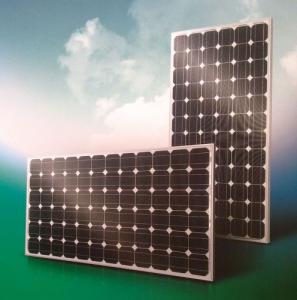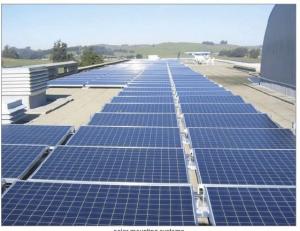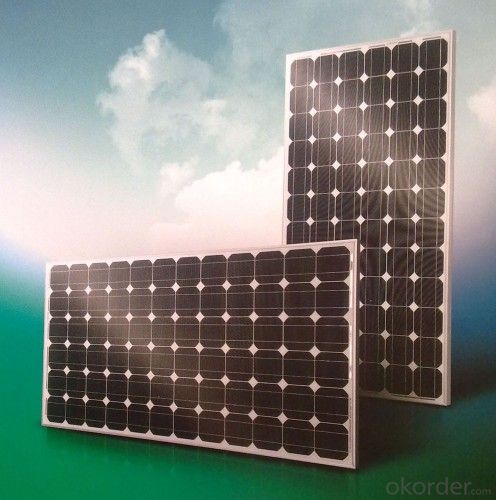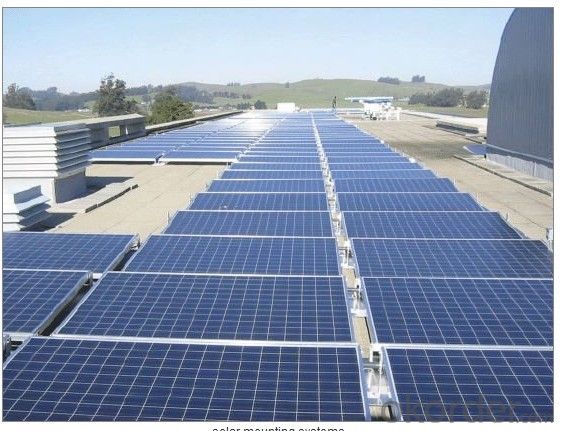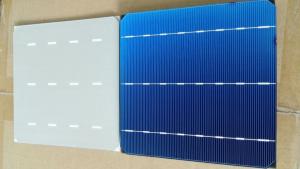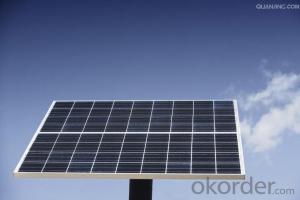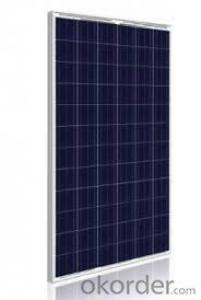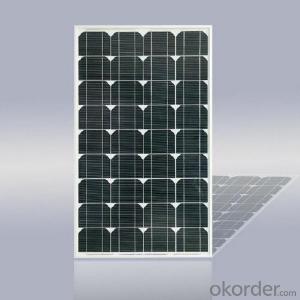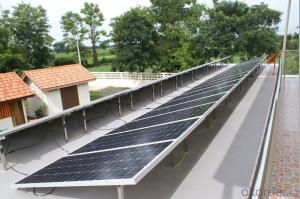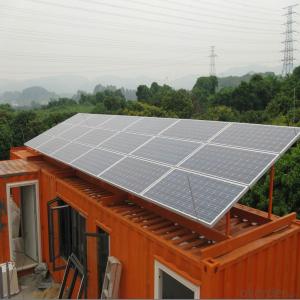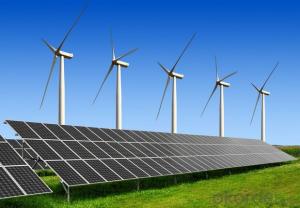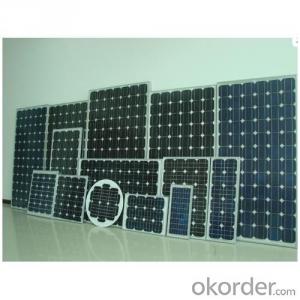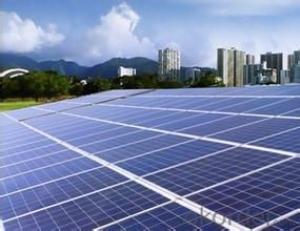Solar Cells for Space Applications:A Grade High Efficiency Solar Panel from China
- Loading Port:
- China main port
- Payment Terms:
- TT or LC
- Min Order Qty:
- 1 m.t.
- Supply Capability:
- 100000000000 m.t./month
OKorder Service Pledge
OKorder Financial Service
You Might Also Like
Quick Details
CNBM Solar is a world-leading and Vertical integrated manufacturer of high-performance with Silicon,
Wafer, Cells, Modules, which convert sunlight into electricity for residential, commercial, and utility-scale
power generation.
The capacity of CNBMSolar is reach to 1GW, and make sure each year our shipment capacity is more
Than 700-800MWs, at the same time, we have set up the largest solar power station with our partner
in Ukraine.
CNBM is a Quality + Service oriented company with“Excellence at Each Step” approach, composed of
the finest components from TUV and IEC-certified partners around the world, CNBM modules consistently
undergo a variety of trials at the company’s Test & Development Centre, ensuring peak performance
capabilities. The company is committed to develop and provide the world with clean and renewable energy
to ease the energy shortages as well as human kind’s impact on the environment.
Specifications
A-grade cell high efficiency 5W-300W PV solar panel
1.Higher conversion efficiency
2.quick delivery
3.Excellent in quality
Technical Parameter:
Good Quality 185W Solar Panel | |
Peak Power-Pmax(W) | 185W |
Open Circuit Voltage-Voc(V) | 44.2 |
Maximum Power Voltage-Vmp(V) | 36 |
Short Circuit Current-Isc(A) | 5.4 |
Maximum Power Current-Imp(A) | 5 |
Maximum System Voltage | 1000V DC |
Maximum Series Fuse Rating | 10A |
Power Tolerance | -1~+3% |
Temperature Coefficients of Pmax | -0.45%/℃ |
Temperature Coefficients of Voc | -0.348%/℃ |
Temperature Coefficients of Isc | 0.031%/℃ |
Nominal Operating Cell Temperature | 44.5±2℃ |
Standard Testing Condition(STC) | Irradiance:1000W/m²;Temperature:25℃;AM=1.5 |
Qualification Test Parameters | |
Operating Temperature | -40℃~+85℃ |
Storage Temperature | -40℃~+85℃ |
Pressure Bearing | ≥5400Pascal/m² |
Wind Bearing | ≥5400Pascal/m² |
Mechanical Characteristics | |
Cell Size | Mono 125*125mm±0.5 |
No.of Cells | 72pcs(6*12) |
Dimension | 1580*808*40mm |
Weight | 15.5Kg |
Glass | 3.2mm High Transmission,Low Iron |
Frame | Anodized Aluminum Alloy |
Junction Box | IP65Rated |
Internal Diodes | 3 Bypass Diodes |
Cable | 1*4.0mm² Length 900mm |
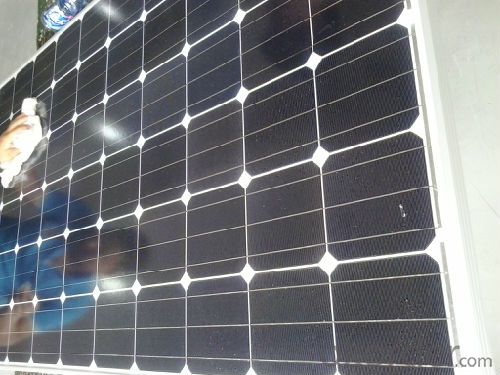
More Details-Photovoltaic, PV
Photovoltaic cells or panels are thin layers of semi-conducting material. Electrical charges are generated. When exposed to sunlight, they produce electricity which is fed into the domestic supply as direct current. A number of cells connected together behind glass form a solar panel.Solar panel refers either to a solar hot water panel, a common type of a solar thermal collector, or to one or more solar photovoltaics (PV) modules, electrically connected and mounted on a supporting structure.A PV module is a packaged, connected assembly of typically 6×10 solar cells. Solar PV panels constitute the solar array of a photovoltaic system that generates and supplies solar electricity in commercial and residential applications. Each module is rated by its DC output power under standard test conditions, and typically ranges from 100 to 320 watts. The efficiency of a module determines the area of a module given the same rated output – an 8% efficient 230 watt module will have twice the area of a 16% efficient 230 watt module. There are a few solar panels available that are exceeding 19% efficiency. A single solar module can produce only a limited amount of power; most installations contain multiple modules. A photovoltaic system typically includes a panel or an array of solar modules, an inverter, and sometimes a battery and/or solar tracker and interconnection wiring.
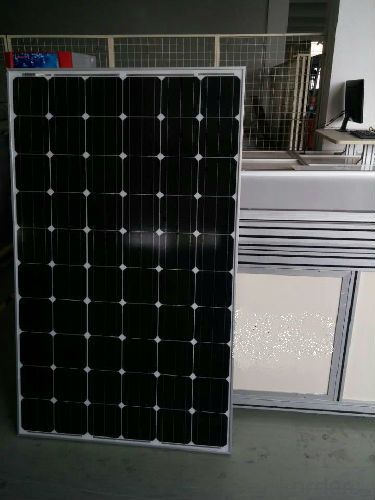
FAQ:What's your product warranty ?>
12 yrs free from defects in materials and workmanship;No less than 90% within 10yrs and no less than 80% within 25yrs
- Q: How do solar cells perform in areas with frequent earthquakes?
- Solar cells can perform well in areas with frequent earthquakes, as they are designed to withstand a certain level of structural stress. However, the installation and mounting of solar panels should be done with proper engineering considerations to ensure their stability during seismic events. Additionally, regular inspections and maintenance may be required to address any potential damages caused by earthquakes.
- Q: What is the role of solar cells in powering remote surveillance systems?
- Solar cells play a crucial role in powering remote surveillance systems by harnessing the sun's energy and converting it into electricity. This renewable energy source allows surveillance systems to operate in remote locations without relying on traditional power grids or expensive fuel sources. Solar cells provide a sustainable and reliable power supply, ensuring continuous operation of surveillance equipment, including cameras, sensors, and communication devices, even in areas without access to electricity.
- Q: PV: the battery to the battery charge problem
- Yes, for example: the battery voltage is 12V, with a 18V solar panels connected to the battery voltage will be slightly higher than the 12V voltage, such as 12.2V look, so the actual working voltage of the solar panels by the
- Q: How are solar cells connected in a solar panel?
- Solar cells are connected in a solar panel through a series of electrical connections, typically using metal conductors, to form an array. These connections allow for the flow of electric current generated by individual solar cells, which are usually made of silicon-based semiconductors, to be combined and harnessed as usable electricity.
- Q: What are thin-film solar cells?
- Thin-film solar cells are a type of photovoltaic technology that use very thin layers of semiconductor materials to generate electricity from sunlight. These cells are typically lighter, more flexible, and less expensive to produce compared to traditional silicon-based solar cells. They are commonly used in applications where weight, flexibility, or cost are important factors, such as in portable electronics or on curved surfaces.
- Q: What is the impact of dust and dirt on solar cell efficiency?
- Dust and dirt can significantly reduce the efficiency of solar cells. When dust accumulates on the surface of solar panels, it creates a barrier that inhibits the penetration of sunlight, thereby reducing the amount of energy that can be converted into electricity. Additionally, dirt particles can cause shading effects and create hotspots, which further decrease the overall efficiency of the solar cells. Regular cleaning and maintenance of solar panels are crucial to keep them operating at their maximum potential.
- Q: What is a solar cell?
- A solar cell is a device that converts sunlight into electricity by utilizing the photovoltaic effect, where the energy from photons is absorbed and causes the release of electrons, generating an electric current.
- Q: How do solar cells perform in areas with frequent power outages?
- Solar cells can be a reliable source of electricity in areas with frequent power outages. Since solar cells generate electricity from sunlight, they are not dependent on the grid for power supply. This means that even during power outages, solar cells can continue to produce electricity as long as there is sufficient sunlight available. However, the performance of solar cells during cloudy or rainy days may be affected, resulting in reduced electricity generation. Additionally, to ensure uninterrupted power supply, it is advisable to use energy storage systems such as batteries in conjunction with solar cells in areas with frequent power outages.
- Q: Can solar cells be used in swimming pool heating?
- Yes, solar cells can be used in swimming pool heating. By capturing sunlight and converting it into electricity, solar cells can power a pool heating system, providing an eco-friendly and cost-effective way to warm up the pool water.
- Q: Can solar cells be used in mining or extraction operations?
- Yes, solar cells can be used in mining or extraction operations. They can be employed to power various equipment and machinery used in these operations, such as lighting systems, ventilation systems, and pumps, reducing the reliance on fossil fuel-based energy sources. Additionally, solar cells can also be utilized to provide electricity to remote mining sites where grid connections are not feasible, thereby reducing the environmental impact and operational costs associated with these operations.
Send your message to us
Solar Cells for Space Applications:A Grade High Efficiency Solar Panel from China
- Loading Port:
- China main port
- Payment Terms:
- TT or LC
- Min Order Qty:
- 1 m.t.
- Supply Capability:
- 100000000000 m.t./month
OKorder Service Pledge
OKorder Financial Service
Similar products
Hot products
Hot Searches
Related keywords
